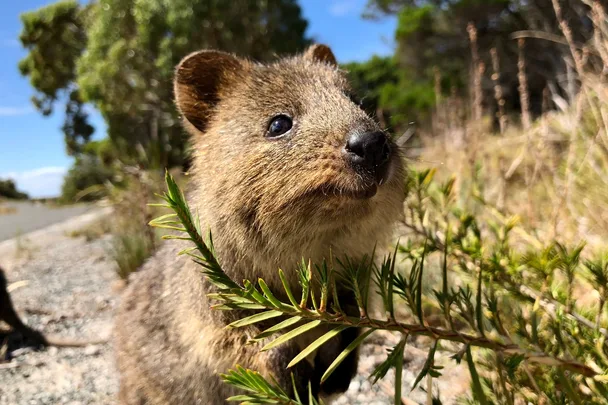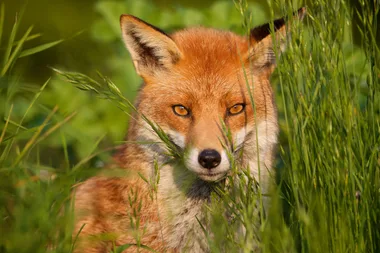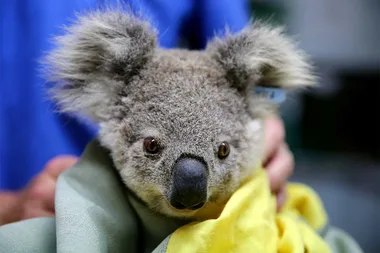There’s nothing better than spotting an animal in the wild. Whether it’s during a road trip around the country or a quick stop on a hike, getting to see an Aussie native animal is a spectacular feat.
These sightings can come few and far between, especially if you’re not looking in the right places. If you’re looking for Aussie animals without a plan, you’re probably more likely to see the roadkill version of a wombat or wallaby!
We’ve put together the A-Z of Aussie animal spotting so you can have your dream encounter with a wombat, or feel terrified by a crocodile.
What to do if you encounter a wild native animal
If you’re hoping to spot all of your favourite Aussie animals in the wild, it’s important to ensure the safety of yourself and the animals while you’re looking. All the native animals below are protected species, meaning you should not pick up or attempt to touch them in any way.
Trying to make contact with Aussie animals is also quite unsafe to do, with many considered dangerous. Although wombats are cute and cuddly, they are very strong and can be territorial. Dingoes look like dogs, but they have lots of bite in them.
If you encounter a wild native animal, the best thing to do is observe it from a distance. Try to stay quiet and not disturb it to much, after all, you’re the one that’s invading their home!
Where to find Australian native animals
Wombats
Wombats are the cuddly, brick-like marsupials that love cold weather and trying to get into your tent to steal your snacks. Wombats can be found in the eastern states of Australia, from south-east Queensland all the way down to Tasmania.
The best places to see wombats are in colder climates, making Victoria, Tasmania and NSW your best bet for a sighting. They are very shy creatures and are sensitive to noise and activity.
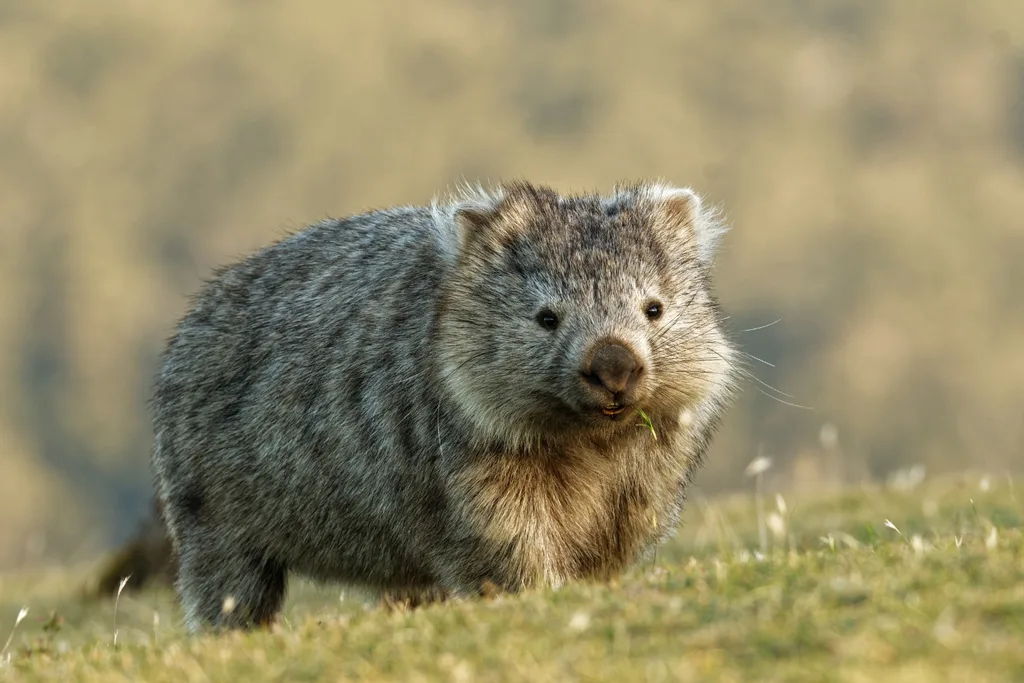
Maria Island
The number one spot to see wombats is on Maria Island in Tasmania. A short ferry trip from Hobart, you’ll likely see more than a dozen wombats after just a short walk on Maria Island.
This national park was part of a conservation effort in the late 1960s, and is now home to hundreds of native Aussie animals, including pademelons, wallabies and a recent addition of Tasmanian devils.
Cradle Mountain and Lake St Clair National Park
In the middle of Tasmania lies the craggy cliffs of Cradle Mountain, and with it, an abundance of wombats!
It’s recommended to do one of the quieter walks, such as the trail to Marion’s Peak or the Overland Track (if you’re brave enough!), so you can spot a few wandering wombats on the way.
Wilson’s Promontory National Park
Located at the southernmost point of Victoria, Wilson’s Prom is home to heaps of native animals, but especially the wonderful wombat. The best place to spot this furry brick is in the Prom Wildlife Viewing Area and along the Prom Wildlife Walk.
Koalas
Let’s face it, tourists want to see one thing and one thing only, a koala. As one of Australia’s more endangered animals, it can be quite hard to spot one in the wild. Koalas are found in eastern and southeastern Australia, primarily in coastal regions.
The best places to see these sleepy marsupials are at sanctuaries and conservation organisations that are dedicated to helping this species.
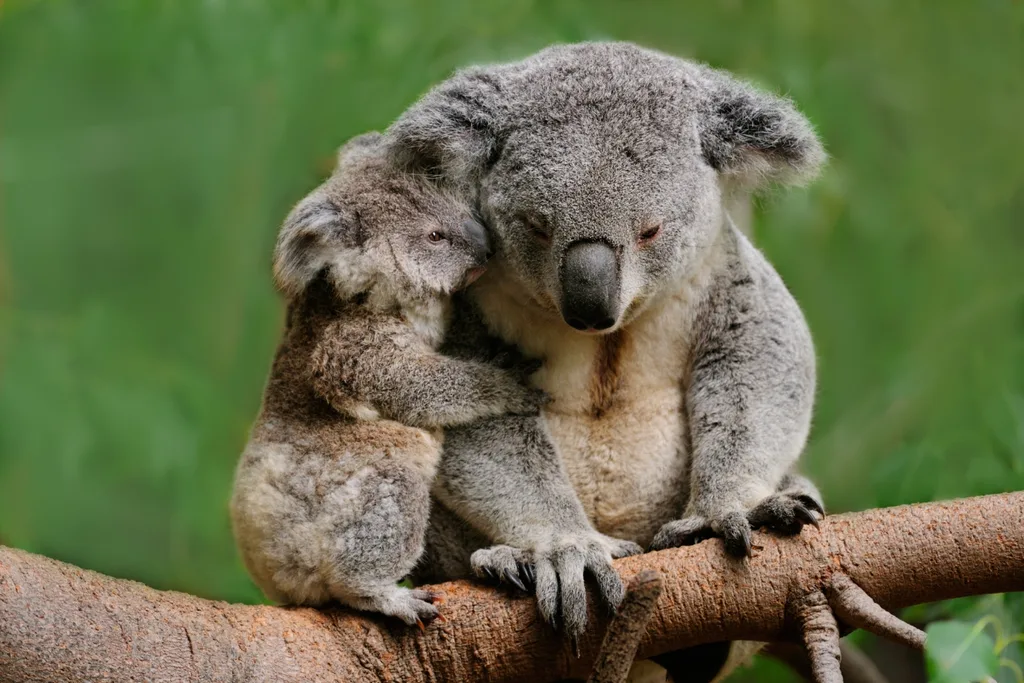
Lone Pine Koala Sanctuary
Located in Brisbane, this sanctuary currently has over 100 koalas in its care. Their mission is to protect and conserve Australian wildlife, with every ticket cost going towards conservation efforts of these cuddly ‘Aussie bears’.
You’ll be able to get up close and personal with a koala or two with one of their unforgettable koala experiences.
Murrumbidgee Valley Nature Reserve
Described on the NSW National Parks website as a ‘haven for koalas’, Murrumbidgee Valley Nature Reserve is probably the best place for a chance to see a koala in the wild. With more than 200 koalas residing in the area, you’re likely to spot a furry friend.
Make sure to picnic at the Koala picnic area (and remember, leave no trace!).
Currumbin Wildlife Sanctuary
While Currumbin Wildlife Sanctuary is known for its feeding lorikeets experience, this Gold Coast gem has every Aussie animal you could possibly think of!
For a koala personal encounter, you can head straight to this sanctuary, and you’ll be guaranteed the cutest viewing of your life.
Crocodiles
Crocodiles are as scary as you can get with Aussie wildlife (unless you’ve got arachnophobia). You can find these dinosaur-era mammals throughout the northern parts of Australia, spanning from WA to Queensland.
Australia is home to both saltwater and freshwater crocodiles, with the former being larger and more predatory, and the latter being smaller and not considered as dangerous.
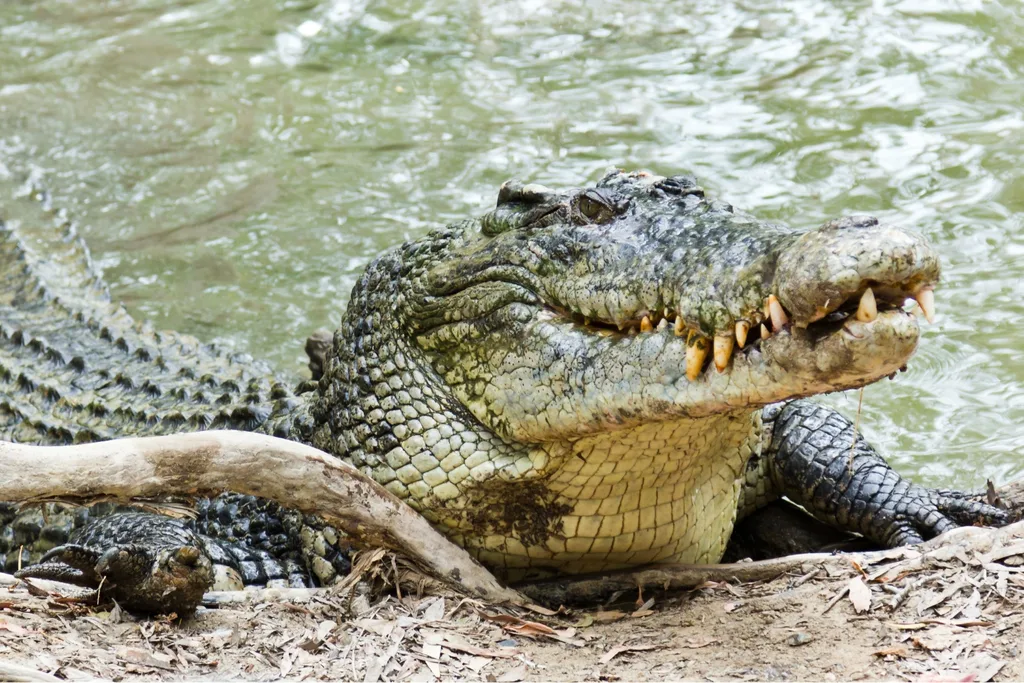
Daintree Rainforest
The Daintree Rainforest is located in north Queensland, and is the perfect spot for catching a glimpse of Australia’s scariest predator.
The Daintree River is home to a large population of salties, and there are many river cruises and group experiences that you can participate in to see a crocodile safely.
Kakadu National Park
In the heart of the Northern Territory lies Kakadu National Park, and with it, some of the biggest crocodiles in Australia.
With over 10,000 crocodiles inhabiting this park, you’ll easily be able to spot one. It’s recommended to take a river cruise on the East Alligator River or Yellow Water Billabong for your best chance at a croc show.
Australia Zoo
If you need the full Irwin experience when it comes to crocs, there’s no better place to see them than the Australia Zoo. Located on the Sunshine Coast in Queensland, you’ll be able to see a few crocs very up close and personal at the Croc Show!
Kangaroos and wallabies
Kangaroos are the ultimate Aussie icon, and their smaller counterparts, wallabies, are just as cute. Honestly, kangaroos and wallabies can be found almost anywhere in Australia, so much so that they’re considered to be pests in some states.
Your best chance at spotting a roo is being in quieter areas of Australia – think country towns, regional areas and ‘the outback’. Wake up early and keep quiet so you don’t spook them!
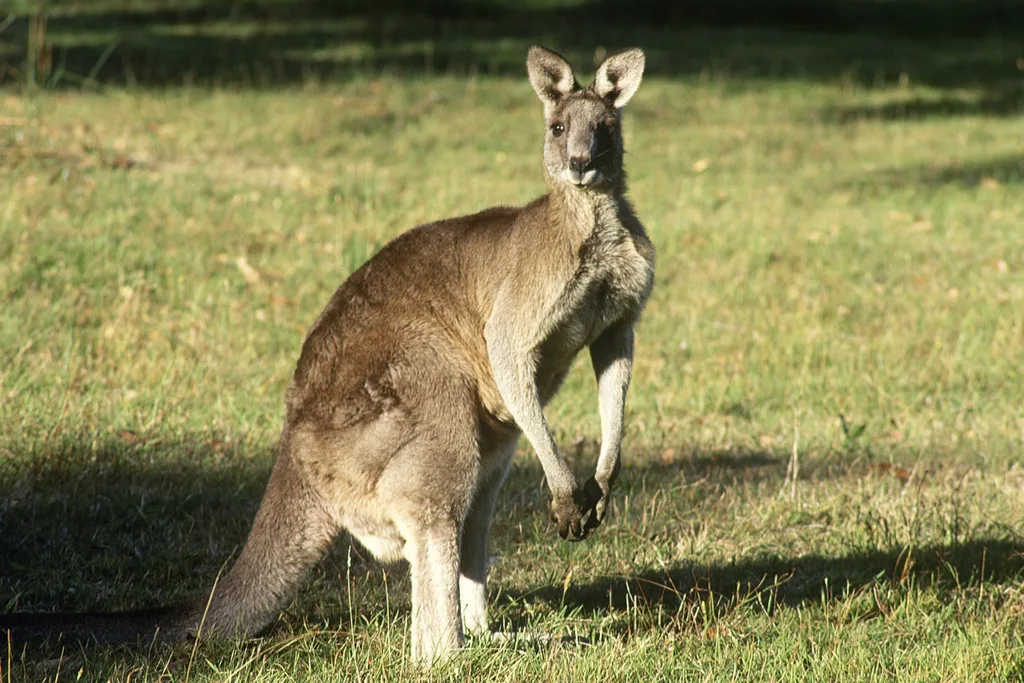
NSW South Coast
The south coast of NSW is known for its abundance of Skippy’s. Think Bawley Point, Kangaroo Valley, and even all the way west to the Hunter Valley. They’re very easy to spot in paddocks and even at quieter campsites.
Australian National Botanical Garden
If you’re heading to Parliament House or Questacon for the day, why not stop to see some kangaroos first?
Canberra’s Australian National Botanical Garden is home to many mobs of roos, making it the perfect place for a picnic.
Dingoes
While dingoes look like normal dogs, they’re anything but cuddly. This canine species is one to be wary of, but if you’re wanting to see one in the wild, there are a few places where they’re in abundance.
Dingo populations encompass all of Australia, apart from Tasmania, and can live in most climates, including deserts, grasslands, forests and alpine regions.
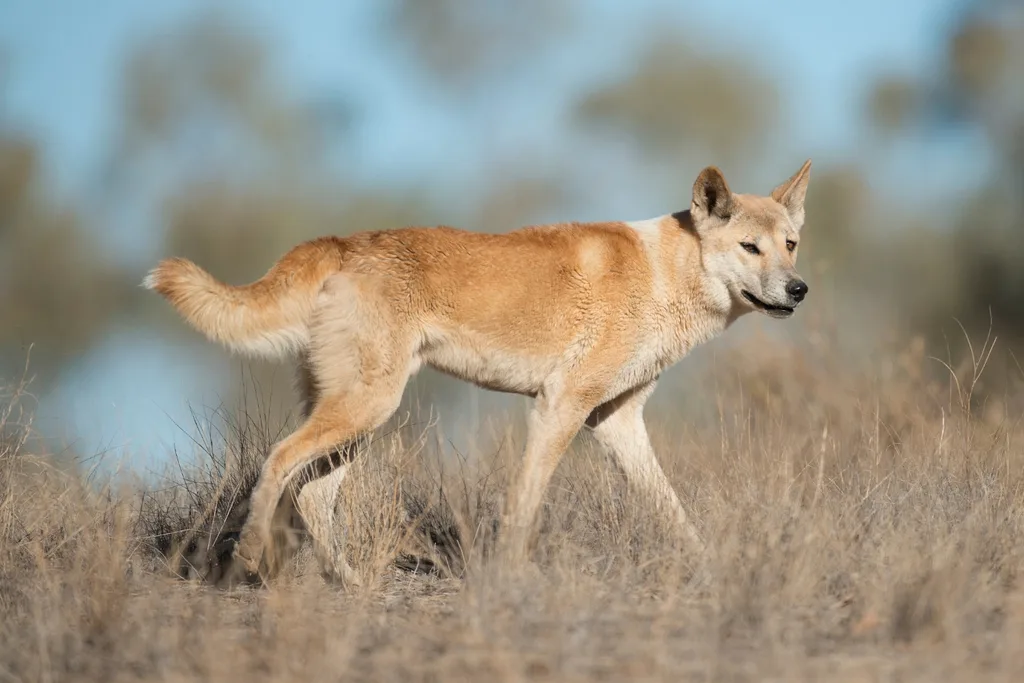
K’gari Island
K’gari (Fraser) Island is home to a significant population of dingoes. Whether you’re car-camping on the beach or just visiting for the day, you’ll most likely be able to spot a couple of them. It’s important to never approach a dingo – on K’gari, there have been many incidents of attacks on adults and children that are visiting and get too close!
Quokkas
Known globally as the most photogenic animal, the quokka is a selfie master. From getting pics with Hugh Jackman to just being one of the cutest Aussie animals, there’s nothing we don’t love about this marsupial.
These tiny furry beasts are only found in a small part of southwestern Australia, and on one island in particular.

Rottnest Island
Cycle around the tiny Rottnest Island for a day trip like no other. Not only are there gorgeous beaches and views, but there are hundreds of quokkas just waiting for the chance to be in your selfie. It’s only a short ferry ride from Perth, so it’s definitely not one to miss!
Tassie Devil
The Tasmanian Devil is well-known by most of the world, but this Aussie animal is currently endangered and in a severe decline. Now only left in Tasmania, with possible reintroductions onto the mainland being considered, this marsupial is known for its sharp bite and scary, devil-like calls.
It’s very unlikely you’ll spot one in the wild, but there are many sanctuaries and conservation organisations that offer viewing sessions.
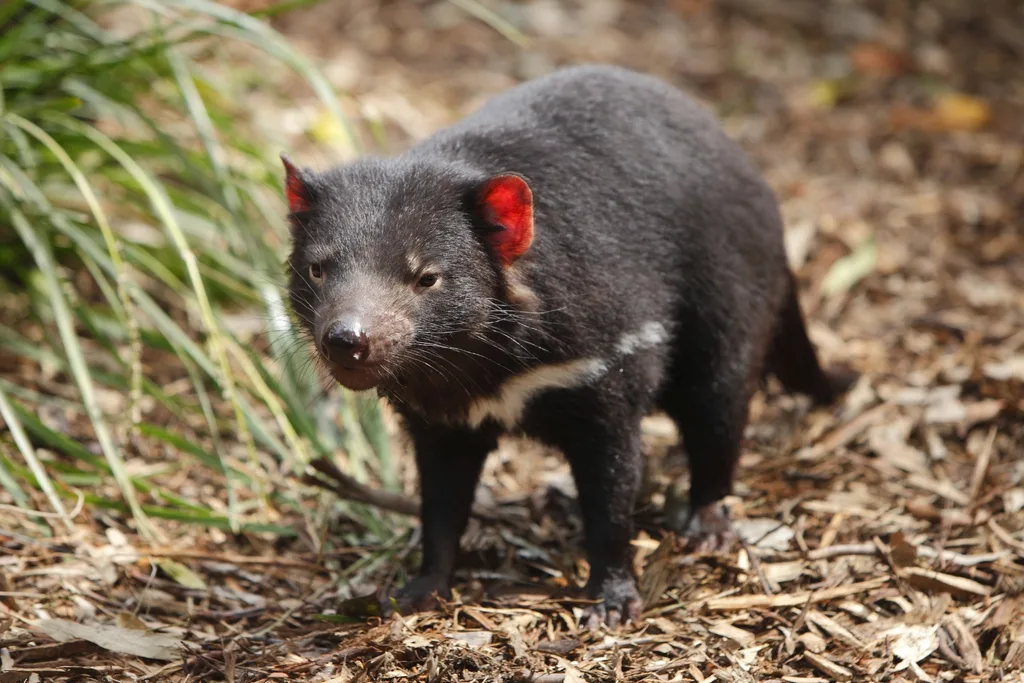
Bonorong Wildlife Sanctuary
Just a short drive from Hobart lies the Bonorong Wildlife Sanctuary, and with it, heaps of Tassie devils for you to marvel at. There are daily tours of the enclosures, and you’ll get to learn all about the conservation efforts that are being done to protect these tiny beasts.
Devils@Cradle
Devils@Cradle are a similar organisation in Tasmania, but are located at the foot of Cradle Mountain in Cradle Mountain and Lake St Clair National Park. Not only can you see a Tassie devil or two, but there are also feeding and night tours offered for you to get real insight into what these creatures are actually like.
Other Aussie animals and where to find them
- Echidna: Cradle Mountain and Lake St Clair National Park for a wild spotting or Featherdale Wildlife Park, NSW for a guaranteed sighting.
- Platypus: Eungella National Park in Broken River, QLD (however, it is very rare to spot these in the wild).
- Cassowary: Wet tropics of Queensland, specifically Mission Beach and Etty Bay.
- Emu: Mungo National Park in outback NSW.
- Pademelon: Cradle Mountain and Lake St Clair National Park, Tasmania.
- Bilby: Charleville Bilby Experience in Queensland.
- Quoll: Devils@Cradle, Tasmania.
- Possum: Any street in Sydney at night!
- Tree kangaroo: The Atherton Tablelands in Queensland.
- Fairy Penguin: Phillip Island Penguin Parade, Victoria.
